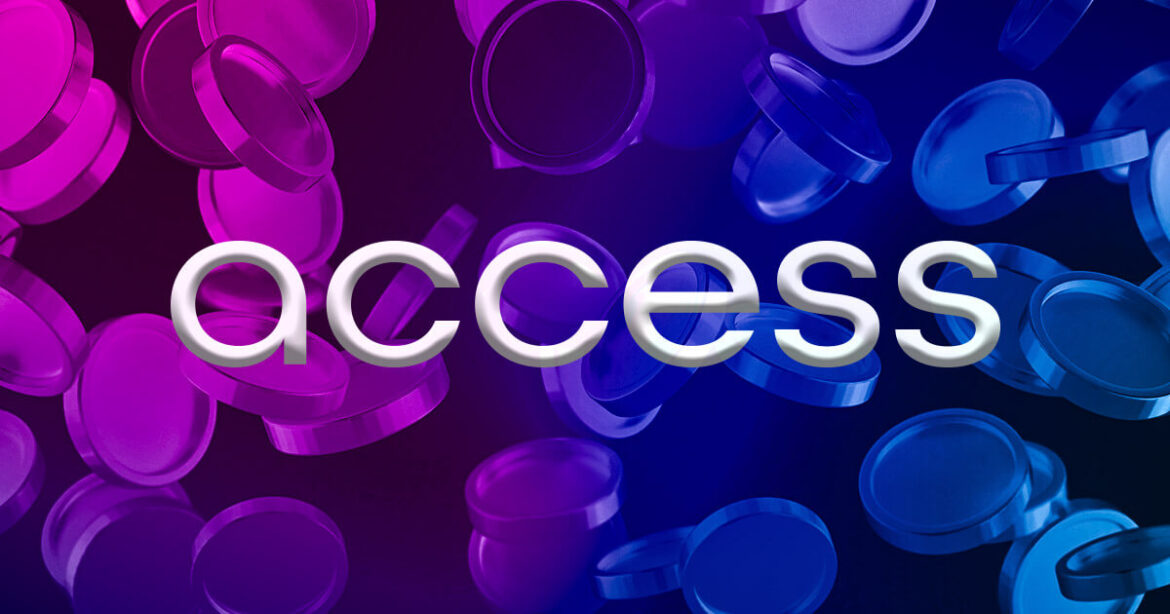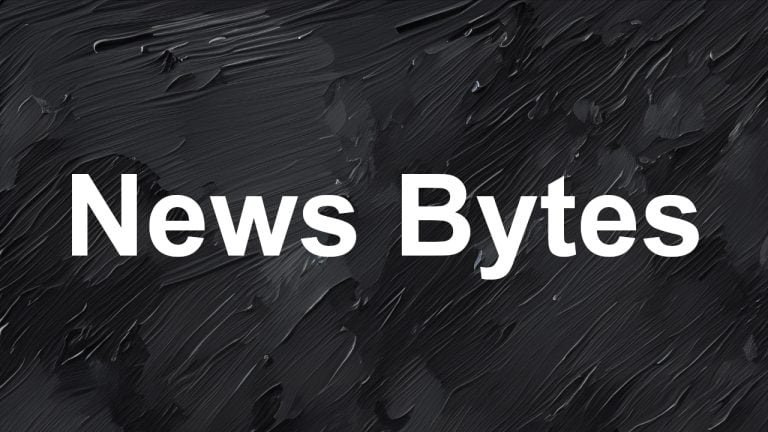 NSA whistleblower Edward Snowden has warned that the National Security Agency (NSA) is on the verge of significantly expanding its surveillance capabilities through a new bill amending Section 702 of the Foreign Intelligence Surveillance Act (FISA), potentially allowing the government to compel a wide array of businesses and individuals to assist in NSA surveillance operations. […]
NSA whistleblower Edward Snowden has warned that the National Security Agency (NSA) is on the verge of significantly expanding its surveillance capabilities through a new bill amending Section 702 of the Foreign Intelligence Surveillance Act (FISA), potentially allowing the government to compel a wide array of businesses and individuals to assist in NSA surveillance operations. […]
Source link
Expand
Following the approval of its license by the Dubai Virtual Assets Regulatory Authority, OKX will be offering spot services and spot pairs to UAE residents. This comes as the country is establishing itself as a welcoming hub for crypto business.
Crypto businesses looking to expand all over the world often face the challenge of needing to secure approval from various regulators to get started. As we’ve seen in the past, this is not always the most straightforward process and can come with a horde of challenges. Thankfully for OKX Middle East Fintech FZE, the Middle Eastern subsidiary of OKX, it will be able to begin its operations in the UAE. This comes as the company has secured a license from the Dubai Virtual Assets Regulatory Authority (VARA).
OKX to Begin Operations in the Middle East
This news was announced on January 16, 2024, and with it, the company can begin offering spot services and spot pairs to both institutional and qualified retail customers. According to OKX, it will begin operations within the next few weeks and these services can be accessed from both its main exchange and its app.
The company’s management has also made it clear that it will be ambitious in pursuing the UAE market.
“This allows us to offer services to UAE residents, which we’re going after, including spot trading and fiat-related services, which means deposits and withdrawals of local currency, United Arab Emirates dirham (AED),” said Rifad Mahasneh, OKX General Manager for the MENA Region.
Some of the trading pairs that UAE residents will have access to include AED/BTC and AED/ETH. It is quite fitting that OKX is targeting the UAE market considering just how accepting it has been of cryptocurrency in the past.
Back in 2016, the country launched a blockchain strategy, making it one of the first in the world to do so. This was followed up with a regulatory framework for cryptocurrency in 2018 which, again, preceded the rest of the world. Historically, the UAE has been a hub for tech development and entrepreneurship and its population has seemed very open to new innovations. Even now, the UAE has the highest public adoption of cryptocurrency, which means that digital assets are well-known to the public.
With this sort of foundation, companies like OKX have a viable environment to engage in crypto businesses, as well as the support of the government. In 2022, the UAE formed the Virtual Asset Regulatory Authority (VARA), which granted the license to OKX. The aim of VARA is to develop regulations that help the crypto sector grow and position the UAE as a global leader in the cryptocurrency industry while still protecting the consumer.
Around the world, we have seen countless examples of countries being indifferent, nonchalant and outright hostile to the crypto industry. Fortunately, it seems to not be the case with the UAE, to the benefit of all involved.
next
Blockchain News, Cryptocurrency News, News
You have successfully joined our subscriber list.
Creator-centric platform Access Labs raises $1.2M to expand Solana-based monetization ecosystem

Creator and media monetization protocol Access Labs has procured $1.2 million in Seed funding from prominent investors such as Sora Ventures, DV Ventures, CMS Holdings, and DoublePeak, paving the way for an innovative monetization method within the crypto space.
The Access Labs model enables users to lock the native ACS token in a creator’s pool in exchange for a product or service. As a result, a novel and engaging ecosystem is being fostered for creators of varying sizes and expertise, including CryptoSlate Alpha.
Mika Honkasalo, Access Protocol founder, emphasizes the company’s mission, stating,
“We’re in the early stages of building a monetization ecosystem for creators of all shapes and sizes. We are set to build products and tools creators are used to in web2, super-powered only by what can be built on Web3 rails.”
This expansion comes following Access Protocol’s day-one listing of an SPL Token on Coinbase on Feb. 15. Since its launch, Access Protocol has accrued over 220,000 unique subscribers across its content offerings. Notably, existing publications and service providers such as CoinGecko, The Block, CryptoSlate, DeSpread (South Korea), and Crypto-Times (Japan) are leveraging Access for web3 monetization.
In addition to its fundraising success, Access Labs has also unveiled a beta of its independent publishing platform, Access Scribe. This platform offers a robust alternative to Substack or Mirror and has built-in web3 monetization capabilities.
Platforms such as Taiwan-based media outlet WuBlockchain and South Korean research and consulting firm DeSpread have been among the first to utilize this innovative resource.
From a broader perspective, Andreas Nicolos, Access Labs Head of Ecosystem Growth, contends that non-fungible tokens (NFTs) are the next focus area for their product suite. He states,
“Barriers to entry into Web3 are too high for traditional media firms. We’ve seen incumbent media companies allocate massive amounts of resources to web3 strategies that lack depth and business continuity.
The industry needs a no code, one-stop shop platform where any creator can grow and develop a foundation of user relationships on chain.”
Underlining the significance of this development for the broader Web3 space, DV Ventures, the venture arm of Chicago-based DV Trading, emphasized its excitement to further its involvement in Web3, stating,
“New monetization models are fundamental to the promise of the crypto industry, and Access stands to emerge at the forefront in the digital content space.”
The fundraising achievement and subsequent developments signal Access Labs’ commitment to fostering an innovative ecosystem for creators. As the crypto industry continues to evolve, Access Labs’ advancements could serve as a catalyst for unprecedented growth within the web3 content and digital content spaces.
Disclaimer: CryptoSlate, a media partner of Access Protocol, received a grant.
Disclosure: Sora Ventures is an investor in CryptoSlate.
Auto suppliers say if UAW strikes expand to more plants, it could mean the end for many
Pat Green is nervous. He has spent the past two years trying to hire talented people to fill the two plants in Grand Rapids operated by Cascade Die Casting Group, which makes aluminum and zinc diecasting for the automotive and appliance industries.
“We’ve got a good team now and I don’t want to lose people because it was hard to find good people,” Green, who is CEO of the company, told the Detroit Free Press, part of the USA TODAY Network, on Monday.
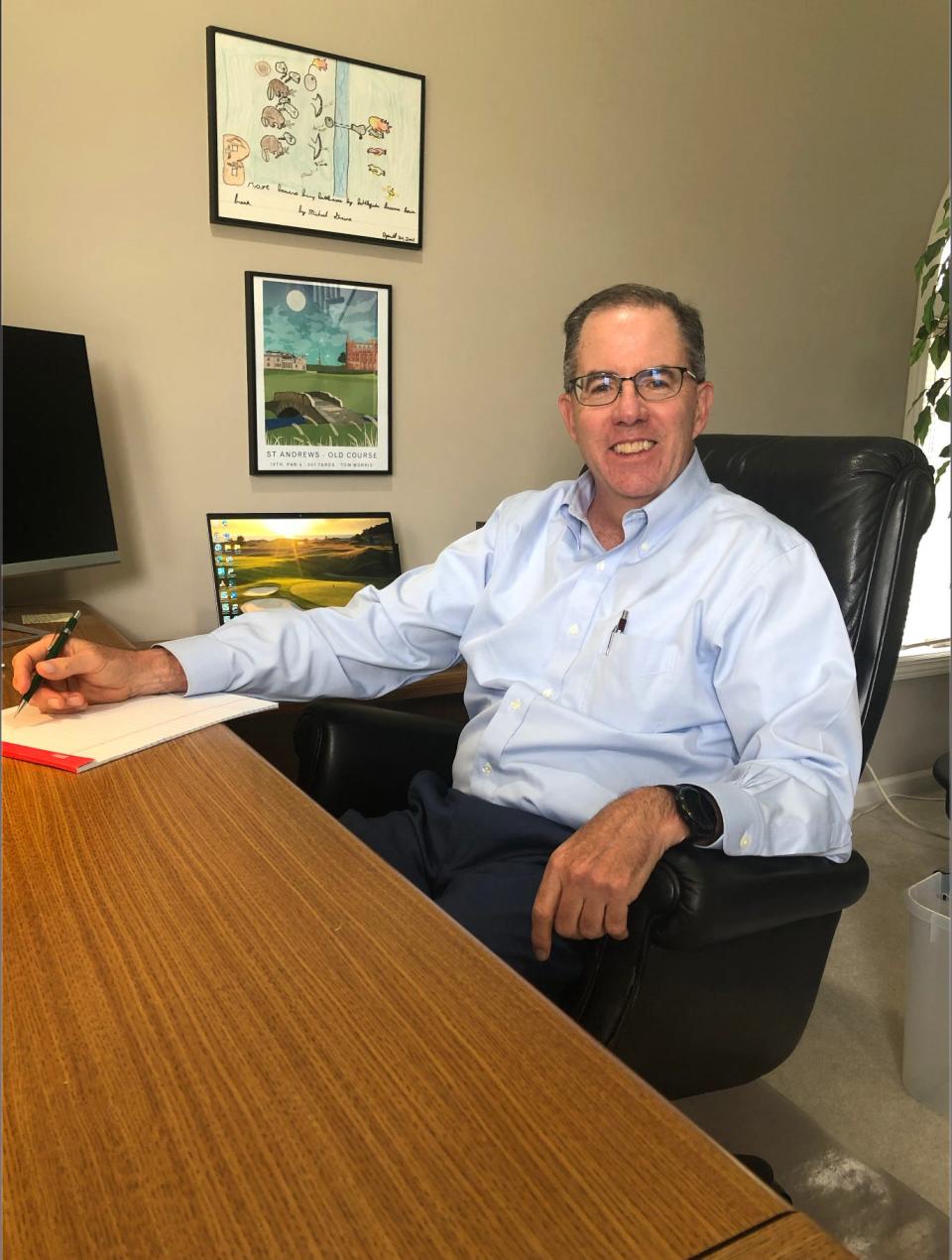
That’s why on the fourth day of a historic United Auto Workers strike against the Detroit Three automakers, Green was intensely planning for ways to ride it out without having to lay off workers if the strike grows and stretches into weeks. He has good reason for planning. On Monday night, UAW President Shawn Fain announced a new strike deadline of this Friday at noon. If Ford Motor Co., General Motors or Stellantis have not made substantial progress toward an agreement with the UAW by that time, Fain will expand the Stand Up Strike to more plants.
‘If not now, when?’ Here’s why the UAW strike may have come at the perfect time for labor
For Green’s part, if that happens, he’ll start by ending overtime at the company and then he’ll ask for volunteers to take some time off with a reduced pay plan. It’s something he started contemplating late last week.
The UAW’s strike started at 11:59 p.m. Thursday when nearly 13,000 UAW workers across the three Detroit automakers walked out of three plants as part of the first wave of shutdowns until a new labor agreement is reached. Those plants are Ford Michigan Assembly Plant (Final Assembly and Paint only) in Wayne, Stellantis Toledo Assembly Complex in Ohio and GM’s Wentzville Assembly in Missouri.
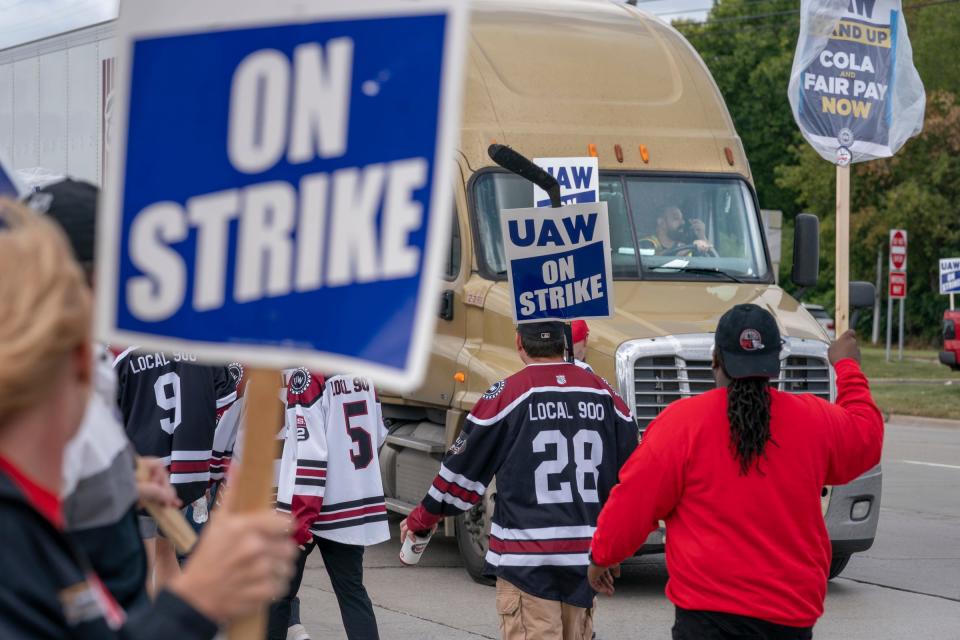
If the union and the automakers can’t reach a tentative agreement, at some point the UAW has said it plans to strike more plants across the three companies. A broader and prolonged strike would mean parts suppliers couldn’t keep production going if the vehicle assembly plants that use their parts are idled. No one is sure of just how long suppliers could hold out.
See the picket lines: UAW launches a strike, targeting three Detroit automakers
“We’re in better shape than most, but if others in the supply chain go down, we’ve got another crisis on our hands just like the chips crisis,” Green said, referring to a recent shortage of semiconductor chips that crippled the industry. “If this stretches out to five or six weeks, there’s going to be real problems in the supply chain. And I could be wrong; it could be shorter than that.”
The first fallout
The Biden administration has been preparing to offer emergency economic aid to auto suppliers to mitigate any long-term damage caused by a prolonged strike, according to published reports.
But the strike has already had some impact. A component maker in Michigan, CIE Newcor, warned it may have to lay off 293 people.
German-based supplier ZF said that it has already had to lay off some workers at various sites, including in Michigan, said Tony Sapienza, ZF North America, Inc.’s head of communications. ZF supplies components for all the vehicles made at the three plants targeted so far in the strike, including the hybrid transmission to the Jeep Wrangler 4xe hybrid made at the Toledo facility.
Sapienza declined to say which of ZF’s facilities have been affected or how many people ZF has laid off. ZF, which has North American offices in Northville, employs 11,000 people at five manufacturing sites and four technology centers in Michigan.
“The impact was immediate; we’ve had to slow production in a couple of areas,” Sapienza told the Free Press. “If the strike were to broaden or last anything longer than one or two weeks, that would be a crisis for the supply chain. I’d be really concerned with tier 2 and tier 3 and their ability to stay solvent.”
Sapienza said a bigger and prolonged strike “would hurt” his company, but because of its size, it would be OK.
But “every plant that goes offline creates additional stress in the supply chain, and we really hope our customers and the UAW are taking this into consideration,” Sapienza said.
U.S. Steel said Monday it is temporarily idling furnace B at the Granite City steel plant in Illinois as a “risk mitigation” in response to the UAW strike. The company said it is evaluating how many of its 1,450 employees there will be affected.
Keeping an eye on Unifor, too
All of this news comes as the UAW’s counterpart in Canada, Unifor, is negotiating a new contract with Detroit automakers as well. Its current contract was slated to expire at 11:59 p.m. Monday. But in the early hours Tuesday morning, Unifor said it would keep talking with Ford, after the automaker made a “substantive offer” on a new labor contract as the former deal expired. Unifor is extending negotiations for a 24-hour period.
Unlike the UAW, Unifor is following tradition and has selected a target company — Ford — to negotiate a deal with first. It would use that agreement as a template for contracts with the other two. In the U.S., the UAW is negotiating with all three automakers separately, but simultaneously.
Around 4 p.m. Monday, Unifor National President Lana Payne said there was still no tentative agreement with Ford.
“While we remain at the table the likelihood of a strike increases with each passing hour,” Payne said, adding that the union has advised more than 5,600 members at Ford facilities in Canada to prepare for all scenarios, including a strike.
After Ford’s eleventh-hour “substantive offer,” Unifor said it would negotiate through the night, but members should continue to maintain strike readiness.
If Unifor does not get a tentative agreement and strikes in solidarity with the UAW, that will be a double whammy for parts suppliers.
“These are not normal times,” Sapienza said. “We’re coming off of three years of stress on the supply chain and so we’re already in a fragile state. We’re keeping an eye on Unifor, for sure. … There’s only so much more stress the system can take.”
Layoffs could go into the thousands
The state of the supply chain is delicate. That’s because it has had to recover from the COVID-19 pandemic, which shut down the industry for eight weeks, then suppliers faced a massive shortage of semiconductor chips used in a variety of car parts. Since early last year, many suppliers have struggled to hire and retain workers.
Joe Petrillo, director of business development and advanced engineering at Meridian Lightweight Technologies in Plymouth, said the company is a global supplier of lightweight cast metal parts to many automakers including the Detroit Three. So the strike is a concern because of the interconnection of the supply chain from the tier 1 suppliers — those that supply parts directly to the carmakers — down to the smaller tier 2 and tier 3 suppliers, those who supply components to the tier 1 group.
“We are monitoring the events and checking in with our suppliers and customers,” Petrillo said. “In our view, an escalation of events that leads to a prolonged strike that possibly idles all the Detroit Three (manufacturing) plants, may prove to be the last Jenga block on a supply base that has been stressed to the max, having to overcome COVID shutdowns, ‘stop-and-go production’ due to chip and part shortages, while still trying to work its way through a constrained manufacturing labor market.”

Glenn Stevens, executive director of MICHauto, the group that advocates for the statewide automotive industry, said he has been talking to suppliers for a couple months and they have all been preparing for a strike scenario for some time.
“Some much more proactively than others, but nobody was flying blind anticipating that there might not be a work stoppage,” Stevens said.
There are about 1,000 supplier facilities in Michigan, he said, noting that 96 of the top 100 suppliers to the North American auto market either have their headquarters or a facility in Michigan. So if the strike expands to other automaker plants and lasts into weeks, the job layoffs could reach into tens of thousands.
“You have the direct employment and you have the multiplier affect of each of the automotive jobs and that is between six to 10 people for every one automaker job, so it’s substantial,” Stevens said. “This is the largest industry in our economy. It has an economic contribution of over $300 billion annually to the state of Michigan.
The potential impact
The larger suppliers are likely more protected than the smaller ones from strike fallout, said Laurie Harbour, CEO of Harbour Results, Inc. That’s because they often have other customers from other industries to keep business going. They can move people around and change up schedules to avoid massive layoffs.
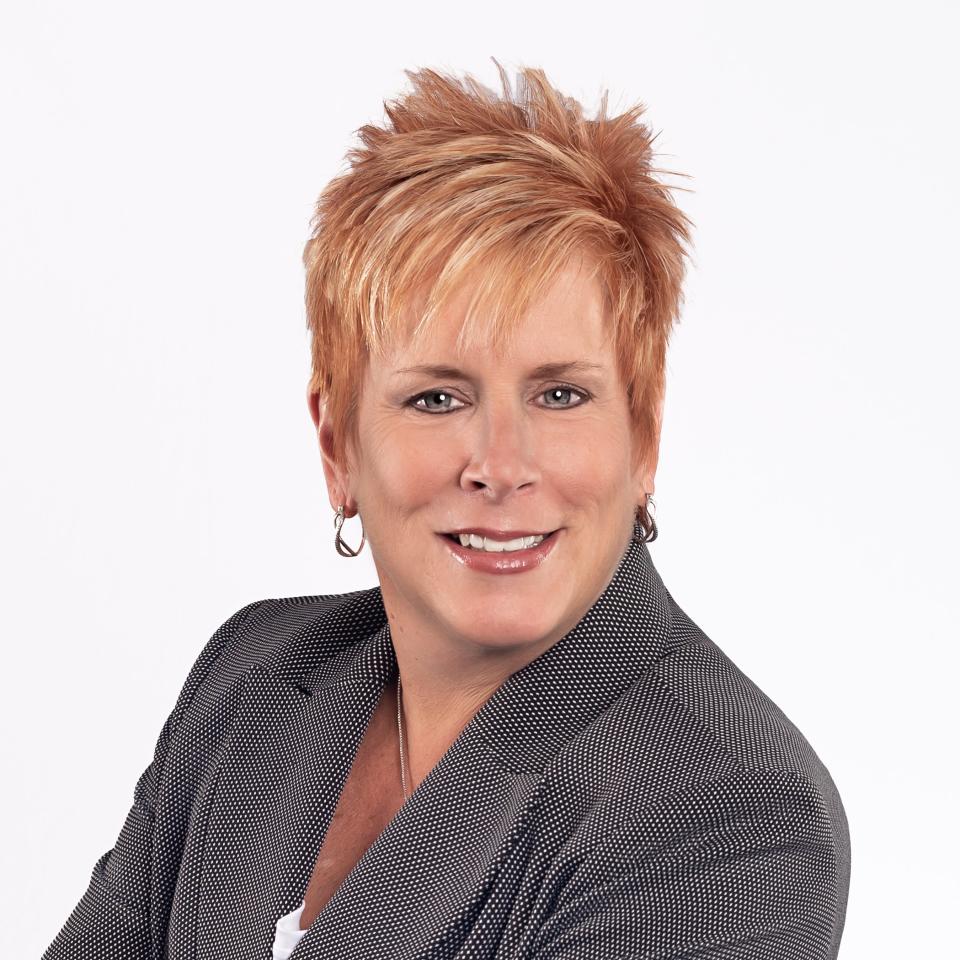
“I talked to several companies last Friday and most said little to no impact yet,” Harbour said. “Any one program, which is what you’re looking at with the (automakers), is not going to create massive layoffs but come tomorrow or the next day if (UAW’s Fain) closes more plants and we get to a significant product like the (Ford) F-150 pickup, then you’re going to see more layoffs.”
Because the sales volume of the F-150 is so important, if the union were to strike the plants that build Ford’s big seller, “you’ll see thousands of layoffs because you have so many supplier plants and sub-suppliers,” Harbour said.
“The fact that it’s happening in this spotty fashion is actually better for the supplier community,” Harbour said. “But every day or week that goes by you could see more and more layoffs.”
Big auto suppliers react
At giant tier 1 auto supplier Magna International, leaders are closely monitoring the situation, said Dave Niemiec, Magna spokesman. The company has about 12,450 employees in Michigan. Niemiec said it is premature to comment on any specific impact the strike may have on its operations.
“However, we have focused considerable attention on contingency planning to proactively address any temporary business disruptions to our operations,” Niemiec said. “If that time comes, we are prepared in terms of temporarily scaling back production on affected programs as efficiently as possible, while being equally prepared to ramp up quickly when ready. In the meantime, we remain hopeful that the parties will be able to reach amicable agreements and the disruption and potential impact will be minimal.”
When asked of any impact from the strike on Lear, spokesman Brian Corbett said, “At this time, we’re not commenting on the UAW strike.”

‘We have to take action’
Harbour said most suppliers she’s talked to are prepared or at least forming plans if the strike grows that include considering how to effectively keep producing, make scheduling changes to their shifts and have layoff strategies in place, even offering supplemental pay up to 70% of workers’ salaries if they are laid off.
“Those are the ones who are financially strong and don’t want to lose their people,” Harbour said. “It’s a daily challenge and you’ll evaluate everything every day: What is my forecast? What can I deliver to my customer? And run a little bit of inventory so that when the spigot comes back on, I have parts and ready to go.”
At Cascade Die Casting Group, Green said the company makes parts for the Detroit Three’s SUVs and pickups. For example, it makes parts for the Jeep Grand Cherokee that Stellantis builds at the Mack Avenue Assembly Plant in Detroit. If the UAW strikes that plant or any of the plants that make the Detroit Three’s heavy duty pickups, Green has to be ready.
Contact Jamie L. LaReau: jlareau@freepress.com. Follow her on X, formerly Twitter: @jlareauan.
This article originally appeared on Detroit Free Press: UAW strikes: Auto suppliers warn of closures if more plants involved
Crypto Exchange OKX Plans to Expand into India despite Murky Regulatory Environment
The exchange recently partnered with blockchain platform Neo to bring its APAC Hackathon to the southern city of Bengaluru in an effort to understand the local culture and support the Web3 ecosystem.
Global cryptocurrency exchange OKX has announced that it will be expanding to India despite the murky regulatory environment in the country. In an interview with CoinDesk, the platform’s Chief Marketing Officer Haider Rafique revealed that OKX was looking to scale up its wallet services by tapping into the rich local developer community.
“We’re going to learn about the community. We’re going to work with local folks. Figure out where we can add value,” Rafique stated.
OKX, a top ten crypto exchange, has about 200,000 wallet users in India, about 5% of the country’s web3 users. The company does not have a global headquarters but has regional hubs in Hong Kong, Singapore, Dubai and the Bahamas.
The crypto community in India is fraught with regulatory uncertainty, existing in a grey area where digital currency is not banned but not legal either. While there have not been any proposals for crypto and Web3 legislation in the nation’s parliament, India implemented a controversial 30% tax on all crypto gains along with anti-money laundering rules. The nation’s central bank remains opposed to legalizing crypto and continues to explore a digital rupee through a pilot program launched in December 2022.
The hostile regulatory environment has made it hard for global exchanges to penetrate the Indian market. Top exchange Coinbase had its trading services halted just three after it began operations in the country. In addition, local politicians have urged the Web3 industry to separate itself from cryptocurrency.
“You have to kind of separate Web3 from CeFi [centralized finance] and I think regulators are starting to do that too,” Rafique said. “They’re more concerned about venues that have fiat on-ramps, which we do but we don’t offer it in India. Once India comes up with a regulatory framework for crypto then we would like to be the front runners.”
Rafique also revealed that OKX does not plan to open an office in the country as that is not a prerequisite for offering Web3 services but added the exchange is intent on hiring a local team.
“We’re trying to identify who’s who in the zoo and what is their contribution. There’s a large developer community. How do we help them, build a relationship with them,” he said. “How do we first let them know what we’re about. And then work with these communities to figure out what is the right way in. Is it for us to sponsor Web3 conferences or developer conferences or host an OKX Blockchain Week? This is what we are exploring.”
The exchange recently partnered with blockchain platform Neo to bring its APAC Hackathon to the southern city of Bengaluru in an effort to understand the local culture and support the Web3 ecosystem.
next
Blockchain News, Cryptocurrency News, News

Mercy Mutanya is a Tech enthusiast, Digital Marketer, Writer and IT Business Management Student.
She enjoys reading, writing, doing crosswords and binge-watching her favourite TV series.
You have successfully joined our subscriber list.
Redwood Materials said that it’s committed to the use of recycled materials, and will also engage in refining and manufacturing activities.
On Tuesday, August 29, the battery and e-waste recycling startup Redwood Materials raised a staggering $1 billion in the latest funding round to expand the recycling operations in the US. Former Tesla Chief Technology Officer JB Straubel founded the company back in 2017.
The firm repurposes used electric vehicle batteries, dismantling them to extract valuable metals like nickel, copper, cobalt, and lithium. Redwood uses these materials to create fresh components for new EV batteries.
One of Redwood’s primary objectives is to manufacture battery components within the country. This will help them mitigate certain international trade and geopolitical uncertainties associated with the electric vehicle sector. Additionally, Redwood is committed to maximizing the use of recycled materials, thereby lessening the environmental impact of the automotive industry’s shift from internal combustion vehicles to battery-electric and hybrid technologies.
Along with its key focus on recycling, Redwood Materials also engages with the refining and remanufacturing processes. This helps them add sustainably mined materials to their products as per the need. Additionally, Redwood Materials has also entered into key partnerships with government agencies.
Redwood secured a $2 billion loan commitment from the U.S. Department of Energy earlier this year. The company intends to utilize this funding to amplify its activities within the United States, encompassing growth both within its Carson City, Nevada headquarters and into new territories. Redwood has also unveiled its intentions to construct a Battery Materials Campus near Charleston, South Carolina.
US’s Push for Domestic Battery Production
US Secretary of Energy Jennifer M. Granholm has highlighted domestic battery and component production as a means to meet the increasing demand for electric vehicles (EVs). It will also generate employment opportunities, and expedite the transition from fossil fuels to sustainable and clean energy sources.
Currently, fossil fuels constitute the predominant energy source globally, contributing to a significant portion of human-made CO2 emissions and other harmful air pollutants. They are responsible for driving climate change and its associated consequences, such as more frequent and severe weather events.
Although the proportion of EVs on the road is growing, gasoline, excluding fuel ethanol, still accounted for 52% of the overall energy consumption within the US transportation sector in 2022, according to data from the Energy Information Administration.
Research conducted by the Argonne National Laboratory predicts that North America’s battery manufacturing capacity will rise to nearly 1,000 Gigawatt hours annually by 2030.
In the latest funding round, Redwood secured backing from key players such as Goldman Sachs Asset Management, Capricorn’s Technology Impact Fund, and other undisclosed funds managed by T. Rowe Price Associates. The series D round of equity financing propels Redwood’s total raised capital to nearly $2 billion. Additional investments came from OMERS, Caterpillar Inc., Microsoft’s Climate Innovation Fund, and Deepwater Asset Management
next
Business News, Investors News, News

Bhushan is a FinTech enthusiast and holds a good flair in understanding financial markets. His interest in economics and finance draw his attention towards the new emerging Blockchain Technology and Cryptocurrency markets. He is continuously in a learning process and keeps himself motivated by sharing his acquired knowledge. In free time he reads thriller fictions novels and sometimes explore his culinary skills.
You have successfully joined our subscriber list.

According to data from the World Health Organization (WHO), more than one billion people are living with some significant disability today. Moreover, with the market for AI-related technologies set to grow to a cumulative valuation of over $2 trillion in the next seven years, it is reasonable to suggest that the marriage of these spaces can help introduce a new era of accessibility.
Transforming the lives of people with speech impediments
A key area where AI is making its presence felt is when it comes to supporting people with non-standard speech. Voiceitt is an accessible speech recognition technology company that uses AI and machine learning to assist people with speech impairments.
The tech is designed to recognize and adapt to non-standard speech patterns, thereby enabling clearer communication. The technology is particularly beneficial for individuals who have cerebral palsy, Parkinson’s disease and Down syndrome, wherein producing clear speech can be challenging.
As the realm of artificial intelligence (AI) has grown, this still-emerging technology has exhibited an ability to help improve the quality of life for people living with different kinds of disabilities.
Dr. Rachel Levy, speech-language pathologist and customer success manager at Voiceitt, told Cointelegraph, “The way our technology works is that people input their speech data into our system, and we have a huge database of non-standard speech. So we have held all of this speech data plus the individuals’ speech data that affects their own model.”
“This means that the technology learns from the individual’s unique speech patterns and uses this information to translate their speech into a form that is easily understood by others,” she added.
Magazine: Should we ban ransomware payments? It’s an attractive but dangerous idea
Levy further explained how the technology adapts to changing speech patterns, particularly for individuals with degenerative disorders. Therefore, as these individuals use the tool, Voiceitt continues to record their speech while human annotators transcribe the data to increase recognition accuracy. So if there’s deterioration in their speech intelligibility, the platform can adapt accordingly and retrain its data models to incorporate the new speech patterns.
Voiceitt also has a live captioning capability. This feature allows for real-time speech transcription during video conference calls or live interactions, making conversations more accessible for individuals with speech impediments. Levy demonstrated this feature to Cointelegraph, showing how the technology can transcribe speech into text and even share it on social media or via email.
Enhancing vision
According to a 2023 study by the WHO, more than 2.2 billion people have some sort of vision impairment, and at least one billion of these cases are easily treatable.
AI-powered imaging tools now have the potential to assist by converting visual data into various kinds of interpretable formats. For instance, tools like OCR.best and Image2TxT are designed to automatically decipher visual cues and convert them into text and audio-based responses.
Similarly, advanced AI models like ChatGPT-4 and Claude 2 have introduced plugins that are capable of decoding extremely complex info (such as scientific data) contained in images, and interpret them with optical character recognition tools.
Lastly, AI-based image tools can increase and decrease contrast and optimize the resolution quality of images in real time. As a result, individuals with conditions like myopia and hyperopia can alter the resolution of images to suit their visual abilities.
Redefining hearing
As of Q1 2023, the WHO estimates that approximately 430 million people currently have “severe disabling hearing loss,” which accounts for nearly 5% of the global population. Moreover, the research body has indicated that by 2050, over 700 million people — or one in every 10 people — will have disabling hearing loss.
Recent AI-assisted hearing tools have allowed individuals with compromised hearing to obtain live captions, audio and video content transcripts. For example, Ava is a transcription app providing the text of any conversation happening around its periphery. Similarly, Google’s Live Transcribe provides a similar service, making everyday conversations more accessible for people with hearing impairments.
Another platform called Whisper harnesses sound separation technology to enhance the quality of incoming speech while reducing background noise to deliver sharper audio signals. The platform also uses algorithms to learn and adapt to a user’s listening preferences over time.
AI-enabled mobility
The Centers for Disease Control and Prevention notes that a little over 12% of Americans experience mobility issues.
Recent innovations in AI-enabled mobility assistants have aimed to build upon already existing mobility aids like wheelchairs.
For example, there are now AI-powered wheelchairs that can take audio cues from the user, thus opening up a new dimension of freedom and mobility. Firms like UPnRIDE and WHILL have created products that offer autonomous navigation and movement capabilities.
AI also appears in mobility-focused exoskeletons and prosthetic limbs, improving the autonomy of finer movements in prosthetic arms and boosting the power of electromyography-controlled nerve interfaces for electronic prosthetics.
AI-based systems can actuate and read different nerve inputs simultaneously, improving the overall function and dexterity of the devices.
The University of Stanford has also developed an exoskeleton prototype that uses AI to improve energy expenditure and provide a more natural gait for users.
Challenges for AI-enabled devices
AI requires the processing of massive data sets to be able to deliver high-quality results. However, in the context of disability, this involves collecting and storing sensitive personal information regarding an individual’s health and physical or cognitive abilities, raising significant privacy concerns.
In this regard, Voiceitt’s Levy stressed that the platform complies with various data privacy regulatory regimes, like the United States Health Insurance Portability and Accountability Act and the European Union’s General Data Protection Regulation.
She also said it is standard practice to “de-identify all of the speech data separating personal data from audio recordings. Everything is locked in a secure database. We don’t share or sell any of our voice data with anyone unless expressly given permission by the user.”
Secondly, because AI tech is expensive to devise, the development of personalized tools for people with specific ailments can be costly and time-consuming. Moreover, the cost of maintaining and updating these systems is also significant.
Recent: PayPal’s stablecoin opens door for crypto adoption in traditional finance
To this point, Jagdeep Sidhu, CEO of Syslabs — the firm behind SuperDapp, an AI-enhanced platform supporting multilingual voice translation and recognition — told Cointelegraph:
“When it comes to people with visual, auditory, or mobility-related impairments, there is no denying that AI-driven technologies hold incredible potential. That said, one of the most significant hurdles in integrating AI for accessibility lies in the realm of cost. It’s an unfortunate reality that people with disabilities often face steeper costs and challenges to perform everyday tasks compared to those without disabilities.”
As AI and its associated technologies see increased adoption, there is reason to believe that people with disabilities will increasingly explore this space to enhance their lives.
Even recent legislation across Europe and North America is being tailored to improve accessibility and inclusivity, suggesting that AI will play a crucial role within this realm.
Collect this article as an NFT to preserve this moment in history and show your support for independent journalism in the crypto space.
Bitstamp is also looking to expand its operations in the UK after securing the FCA license earlier this year.
One of the oldest cryptocurrency exchanges Bitstamp is looking to expand its footprint and service offerings amid the current talks of raising fresh funding. Jean-Baptiste Graftieaux, global chief executive officer of the exchange appraised the recent developments. As per the company spokesperson, Bitstamp started its fundraising efforts earlier this year in June 2023. Mike Novogratz’s Galaxy Digital is acting as an adviser in the entire process. Earlier, Galaxy Digital served as an adviser to Pantera, which later sold its minority stake in Bitstamp to Ripple in 2023. Bitstamp said that they would be using these funds to launch crypto derivatives trading in the European continent next year.
Additionally, they would also use these funds to expand the number of markets that it serves in Asia. The company spokesperson said that Bitstamp is also looking to expand its operations in the U.K. In a statement to Bloomberg, Graftieaux said:
“Bitstamp is not for sale, and we are not actively looking to sell the company. Our current and exclusive priority is to raise money through strategic investors to accelerate Bitstamp’s growth by providing new products and services to retail and institutional crypto customers.”
Earlier this year in June, Bitstamp also secured approval from UK’s Financial Conduct Authority (FCA) to function as a registered crypto firm in the region. After obtaining the license, Bitstamp stated its dedication to increasing its presence and investments in the UK market.
Bitstamp’s Growth Over the Years
As said, Bitstamp is one of the oldest crypto exchanges established in 2011 and based out of Luxembourg. Back then Bitstamp was among the major competitors to now-defunct Bitcoin exchange Mt. Gox. Now, it’s the seventh-largest exchange in the world. It had around $126 million worth of trading in a recent 24-hour period.
Bitstamp also has a part in the US entity called Bitstamp USA. The exchange also has a special license called BitLicense, essential to operate in New York state.
More platforms for cryptocurrencies are getting into the derivatives market. This market used to be mostly dominated by FTX and Binance. But after the FTX collapse, Bitstamp seems to be grabbing an opportunity here. Coinbase Global Inc and Gemini, two other big companies in the cryptocurrency world, started their own derivatives markets outside the US this year. Bitstamp was among the first exchanges to allow XRP trading after the court ruling.
next
Blockchain News, Cryptocurrency News, News

Bhushan is a FinTech enthusiast and holds a good flair in understanding financial markets. His interest in economics and finance draw his attention towards the new emerging Blockchain Technology and Cryptocurrency markets. He is continuously in a learning process and keeps himself motivated by sharing his acquired knowledge. In free time he reads thriller fictions novels and sometimes explore his culinary skills.
You have successfully joined our subscriber list.
TikTok Moves to Expand Online Retail Shop with New E-Commerce Initiative
The new shopping feature introduced by TikTok is limited to UK users for now.
TikTok, the popular video-sharing social media platform, is taking a big step into the world of e-commerce with its latest shopping venture. The company has recently introduced a new in-app feature called “Trendy Beat”, which serves as a gateway to a world of trending and popular items.
TikTok Unlocking a New E-Commerce Experience
The new shopping feature allows users to explore and purchase a wide selection of products featured in viral videos, such as ear wax extraction tools and fashionable apparel. The company has chosen the United Kingdom as the testing ground for its “Trendy Beat” shopping feature. The move allows TikTok to gather valuable insights and fine-tune the user experience before a potential global expansion.
While the new e-commerce feature is limited to UK users for now, the company said it is designed to leverage the TikTok influence on consumer behavior to provide users with a seamless and immersive shopping experience within the app.
The company has also recently filed a trademark application for its Trendy Beat in the United States, indicating a potential expansion to the country and promising a broader audience the opportunity to be part of the Trendy Beat shopping experience.
The trademark application covers many apparels, including dresses, scarves, hats, footwear, bathing suits, sleep masks, sweaters, skirts, and shirts.
TikTok to Ship Items from China
According to an earlier Financial Times report, all advertised items on Trendy Beat will be shipped and sold by an undisclosed subsidiary of ByteDance, TikTok’s parent firm. The company confirmed the news with TechCrunch on Thursday.
With TikTok’s deep understanding of product trends and user behavior, ByteDance aims to leverage its massive user base to sell its products through the platform. The Beijing-based firm plans to acquire or manufacture the items based on trends and user preferences. This ambitious move is internally referred to as “Project S”.
The new business initiative challenges traditional retail models and positions TikTok to compete with industry giants like Amazon and Shein. The social media platform aims to establish itself as a dominant player in the e-commerce sector by capitalizing on its user base’s influence and engagement.
TikTok’s influence on consumer behavior is unparalleled, and its impact on shopping habits is undeniable. The phrase “TikTok made me buy it” has become a cultural phenomenon, showcasing the platform’s ability to drive impulse purchases and shape consumer preferences.
However, introducing the new shopping feature is set to change the dynamic of its current e-commerce strategy as it plans to sell its own products. The current TikTok Shop marketplace allows other brands to leverage its popularity to sell their products to users within the app.
With billions of views and a massive audience, TikTok’s integration of the Trendy Beat shopping section aims to amplify its influence further and strengthen its position in the online retailing business.
TikTok Chief Operating Officer Steps Down
Meanwhile, TikTok’s chief operating officer V Pappas has resigned after five years of service. According to the announcement, the Australian-born COO stepped down to refocus on her entrepreneurial passion.
“Given all the successes reached at TikTok, I finally feel the time is right to move on and refocus on my entrepreneurial passions,” said Pappas.
Before her departure, the company’s CEO, Shou Chew, announced in a letter to employees that Zenia Mucha would join the TikTok team as chief brand and communications officer.
next
News, Social Media, Technology News

Chimamanda is a crypto enthusiast and experienced writer focusing on the dynamic world of cryptocurrencies. She joined the industry in 2019 and has since developed an interest in the emerging economy. She combines her passion for blockchain technology with her love for travel and food, bringing a fresh and engaging perspective to her work.
You have successfully joined our subscriber list.



